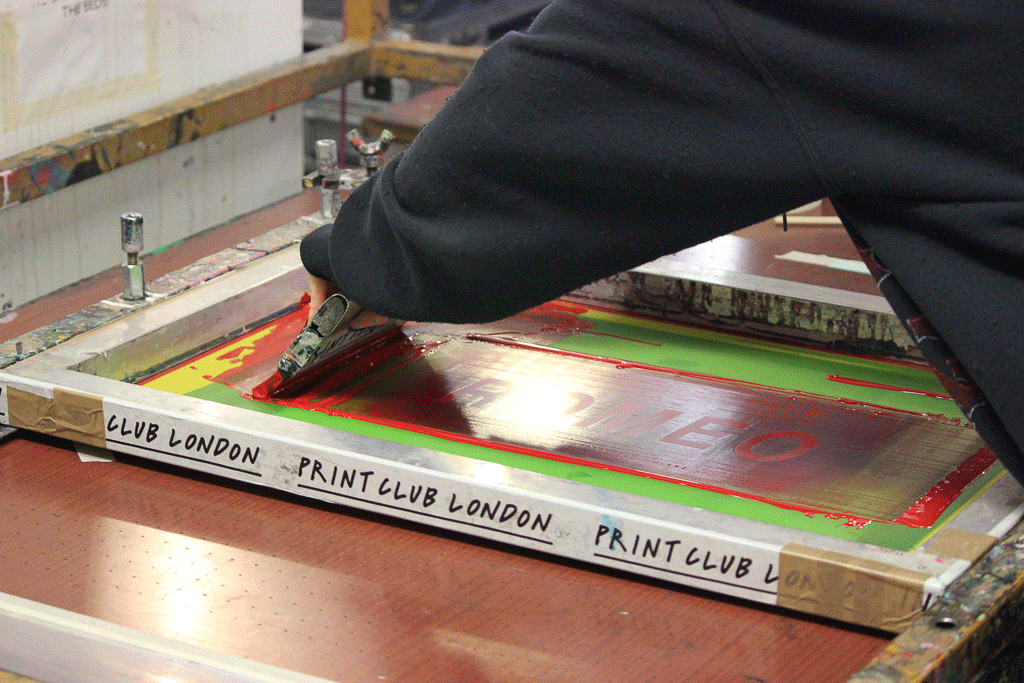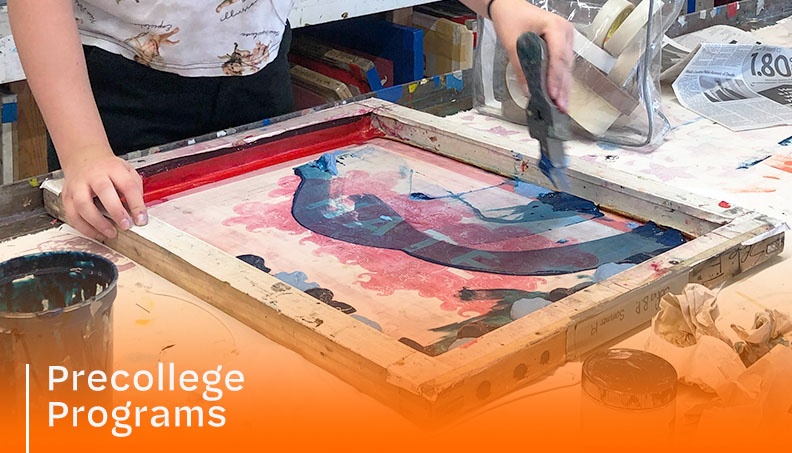Discover the Various Sorts Of Screen Printing Techniques for Your Following Job
Screen printing offers a diverse array of strategies that can improve any imaginative task. From standard methods like serigraphy to modern technologies such as direct-to-garment printing, each strategy has its one-of-a-kind advantages. Specialty options, including environment-friendly and metallic inks, introduce even extra opportunities. Understanding these techniques can significantly impact the last outcome. The challenge exists in selecting the most suitable approach for particular demands and desired impacts. What aspects should one think about?

The Essentials of Screen Printing
Screen printing may seem complicated, it is fundamentally an uncomplicated procedure that entails moving ink via a mesh screen onto different surface areas. The strategy starts with the production of a pattern, which defines the layout to be printed. This stencil is connected to a mesh screen, commonly made of polyester or nylon. When the stencil is in place, ink is related to the screen and pushed with the mesh utilizing a squeegee, leading to the desired pattern being printed on the underlying product.
Screen printing can be done on a large range of substratums, consisting of textile, plastic, and paper, making it a versatile option for different jobs. The process enables vivid colors and complex layouts, making it prominent in markets such as style, advertising and marketing, and art. Recognizing these essentials furnishes individuals with the fundamental understanding required to explore advanced techniques in screen printing.
Standard Screen Printing Techniques
Traditional screen printing methods have been utilized for centuries, preserving the workmanship and artistry of this approach. This strategy utilizes a mesh screen to move ink onto a substrate, such as material or paper, permitting vibrant and long-lasting layouts. The process starts with producing a pattern, which blocks certain areas of the screen to regulate where the ink will be applied.
One popular technique is serigraphy, commonly utilized for artistic prints and minimal versions. One more is using water-based inks, which are environmentally friendly and offer a soft feel on textiles - 10:9 Design reviews. Additionally, traditional approaches can consist of hand-operated printing, where craftsmens use ink with a squeegee, making sure precision and focus to information
These methods remain valued in the industry for their responsive high quality and the special structures they produce, appealing to both consumers and makers that appreciate the heritage of screen printing.
Digital Screen Printing Innovations
As the need for faster production and modification in the printing industry has actually surged, electronic screen printing developments have become a game-changer. This modern technology blends traditional screen printing approaches with electronic processes, permitting fast prototyping and intricate layouts that were previously difficult to attain. One considerable development is the intro of direct-to-garment (DTG) printing, which helps with premium, full-color prints on various textiles without the demand for screens. In addition, developments in ink solutions have brought about environment-friendly options that preserve vibrant colors while decreasing environmental effect. Making use of automated systems additionally streamlines production, lowering labor costs and improving accuracy. These developments not just satisfy small batch orders and individualized designs however likewise permit quicker turnaround times, making them optimal for companies concentrated on conference consumer demands in a fast-paced market. Digital screen printing, as a result, stands for an important development in the domain of printing methods.
Specialized Screen Printing Approaches
Exploring specialized screen printing approaches reveals a varied array of techniques that push the boundaries of creativity and functionality in the printing industry. Among these, glow-in-the-dark inks offer an one-of-a-kind aesthetic result, making layouts come active in low-light problems. Metal inks, recognized for their shimmering coating, include a touch of luxury to printed materials. Another cutting-edge approach is discharge printing, which gets rid of dye from the textile as opposed to adding ink, leading to a soft, vintage feel. High-density printing produces a raised texture externally, boosting tactile interaction. Additionally, water-based inks are gaining appeal for their lively colors and lowered ecological influence. Each of these specialized techniques deals with details design demands, making it possible for brands and musicians to produce standout items that resonate with their audiences. By leveraging these techniques, companies can elevate their screen printing tasks to new elevations, making certain memorable impressions.
Eco-Friendly Screen Printing Options
Green screen printing alternatives are gaining traction as the market changes towards sustainability. Lasting ink choices and making use of eco-friendly materials are crucial components in lowering the ecological impact of the printing procedure. By taking on these methods, screen printers can add to an extra lasting future while maintaining click here high-quality results.
Lasting Ink Choices

Biodegradable Products Use
As the screen printing sector evolves, the incorporation of naturally degradable products is coming to be significantly essential for ecologically aware practices. Suppliers and developers are now checking out inks and substrates made from natural, renewable sources that decompose more efficiently than traditional counterparts. These eco-friendly alternatives lower plastic waste and decrease ecological influence, lining up with the growing demand for lasting items.
Typical examples consist of water-based inks and natural cotton fabrics, both of which decrease hazardous chemicals and promote eco-friendliness. Brand names that embrace these materials commonly boost their market allure, drawing in consumers that focus on sustainability. As awareness of ecological problems continues to climb, the shift towards naturally degradable materials in screen printing is most likely to obtain energy, fostering a greener sector requirement.
Choosing the Right Method for Your Project
Just how can one establish the most ideal screen printing method for a certain job? The choice rests on numerous aspects, consisting of the material to be published on, the complexity of the style, and the wanted production quantity - 10:9 Design Embroidery. For example, direct-to-garment printing is perfect for detailed designs with many shades, while typical screen printing stands out for bigger runs of less complex graphics
Furthermore, consideration of the end-use of the published thing is important. For outside applications, methods that supply longevity and weather resistance, such as plastisol ink, may be favored. Alternatively, environmentally-conscious jobs might profit from naturally degradable products or water-based inks.
Eventually, recognizing the task's unique requirements permits an informed selection, ensuring both aesthetic allure and useful long life. By reviewing style complexity, material compatibility, and production range, one can properly pick the most proper screen printing method to fulfill their task's goals.
Frequently Asked Questions
What Is the History of Screen Printing?
Screen printing originated in old China around 1000 ADVERTISEMENT, evolving via Japan and Europe. By the 20th century, it came to be prominent in industrial art and fashion, revolutionizing just how styles were produced and distributed around the world.

How Do I Prepare Artwork for Screen Printing?
To prepare artwork for screen printing, one need to ensure high resolution, make use of a suitable color mode, create different layers for each and every color, and transform message to lays out, ensuring compatibility with the printing procedure and preferred result.
What Materials Are Finest for Screen Printing?
The ideal products for screen printing consist of high-grade inks, sturdy screens, and suitable substratums like cotton, polyester, or blends. In addition, utilizing ideal solution and mops can improve the printing process and results.
Can I Evaluate Print in your home?
Yes, screen printing in your home is possible. With the appropriate products, setup, and strategies, individuals can create high-quality prints. Cautious consideration of office and devices is necessary for effective outcomes.
What Are Typical Errors in Screen Printing?
Typical errors in screen printing include improper direct exposure times, poor ink uniformity, misalignment of screens, insufficient cleansing of products, and overlooking to check prints. These errors can compromise the quality and precision of the last product.
Screen printing may appear complex, it is basically an uncomplicated procedure that includes transferring ink through a mesh screen onto various surface areas. As the demand for faster production and modification in the printing market has risen, electronic screen printing developments have arised as a game-changer. Checking out specialty screen printing techniques reveals a varied variety of methods that press the limits of creative thinking and performance in the printing industry. The ideal materials for screen printing consist of top notch inks, resilient displays, and appropriate substrates like cotton, polyester, or blends (10:9 Design Abilene). Usual mistakes in screen printing consist of inappropriate direct exposure times, inadequate ink consistency, imbalance of screens, inadequate cleansing of materials, and disregarding to examine prints